下拉有很多__【询价/阅新品 + 右侧联系】
山东枣庄观光塔效果图:

山东枣庄古建宝塔效果图方案效果图:
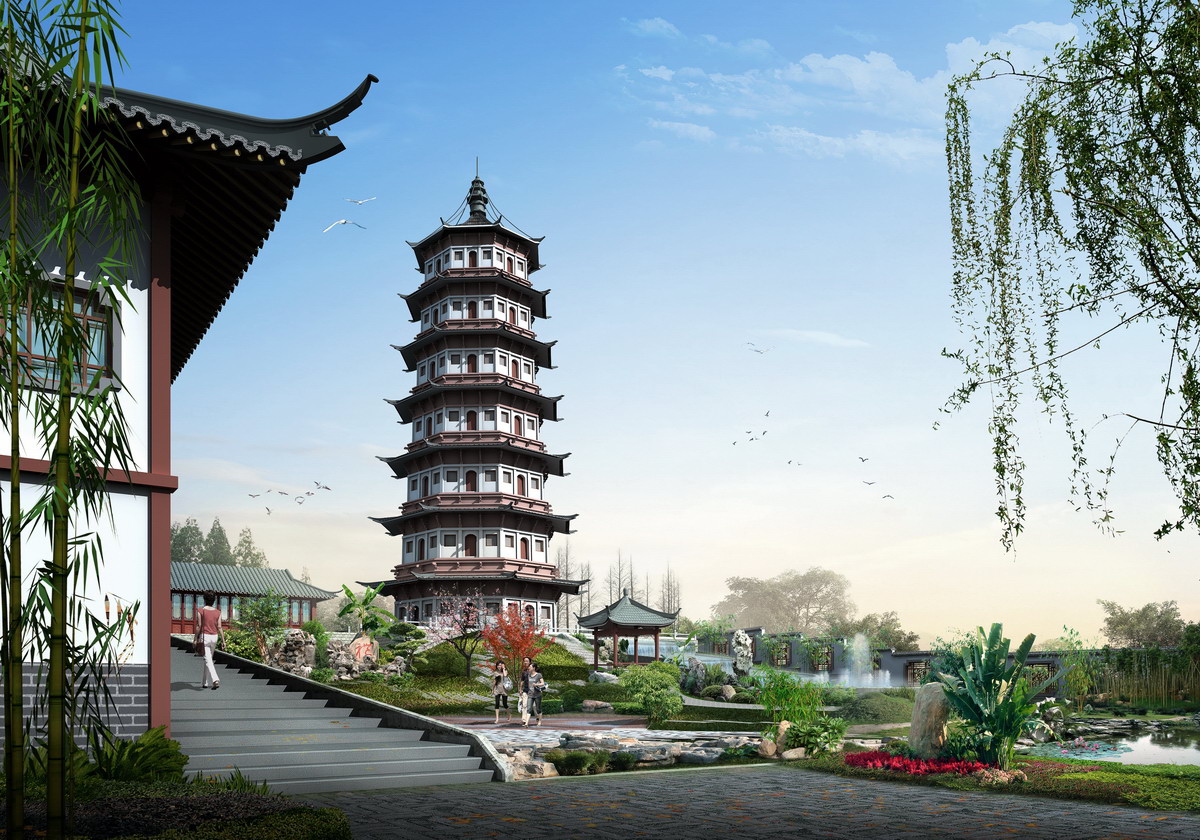
山东枣庄古建会所鸟瞰效果图:
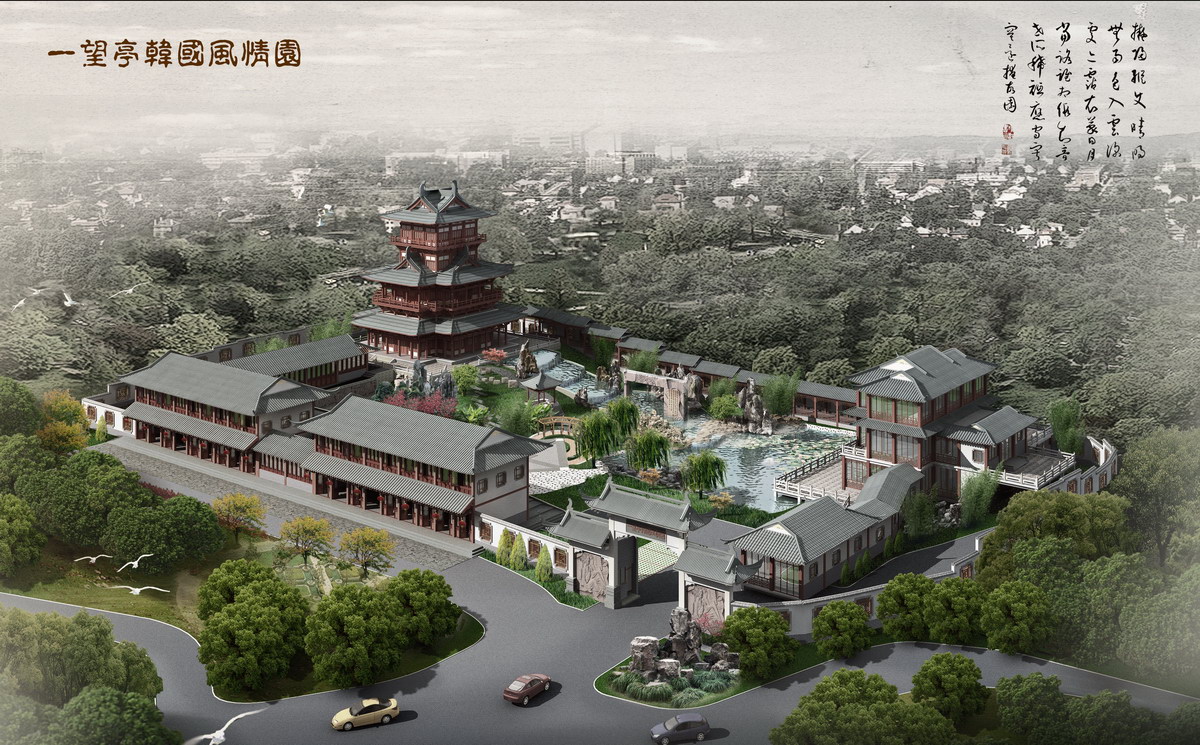
枣庄古建商业街开发设计方案效果图:
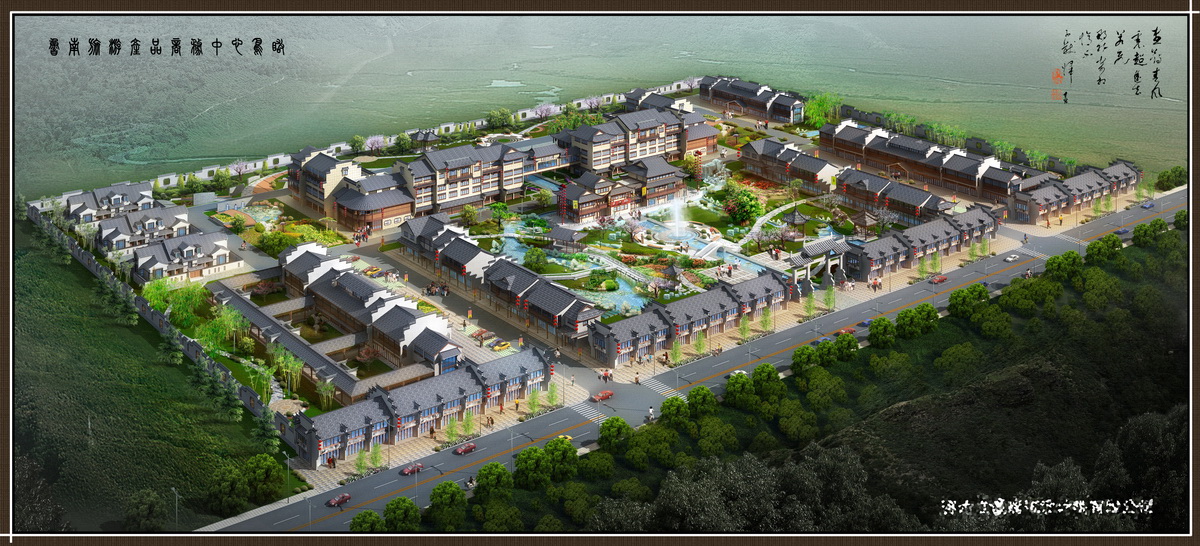
陈官庄纪念馆效果图:
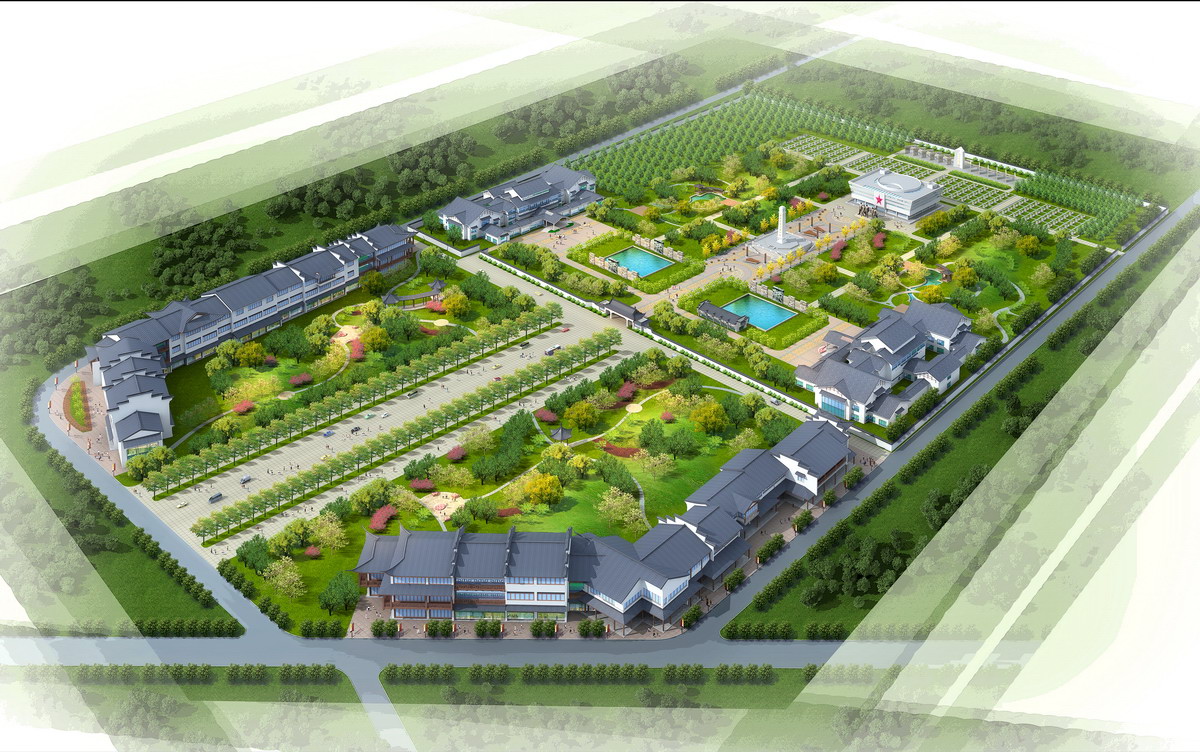
智能车库建筑改造方案效果图:
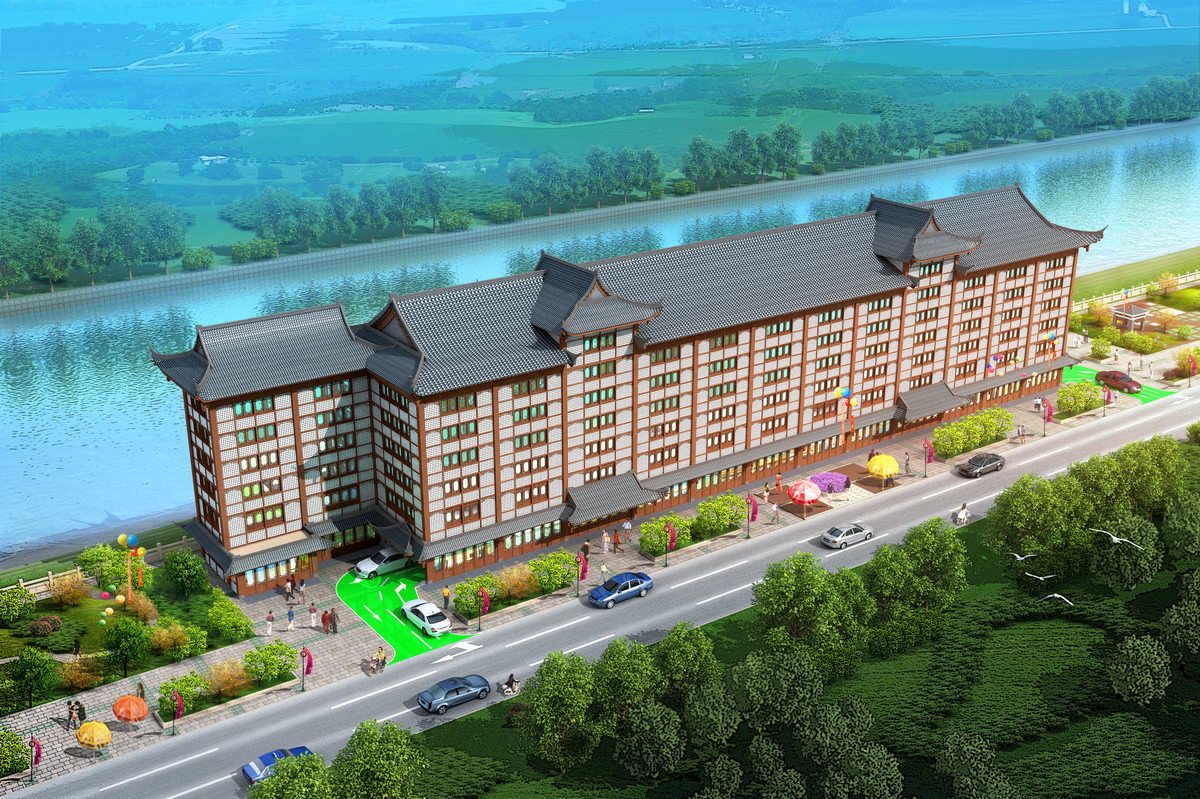
简约风格古建筑小区鸟瞰效果图:
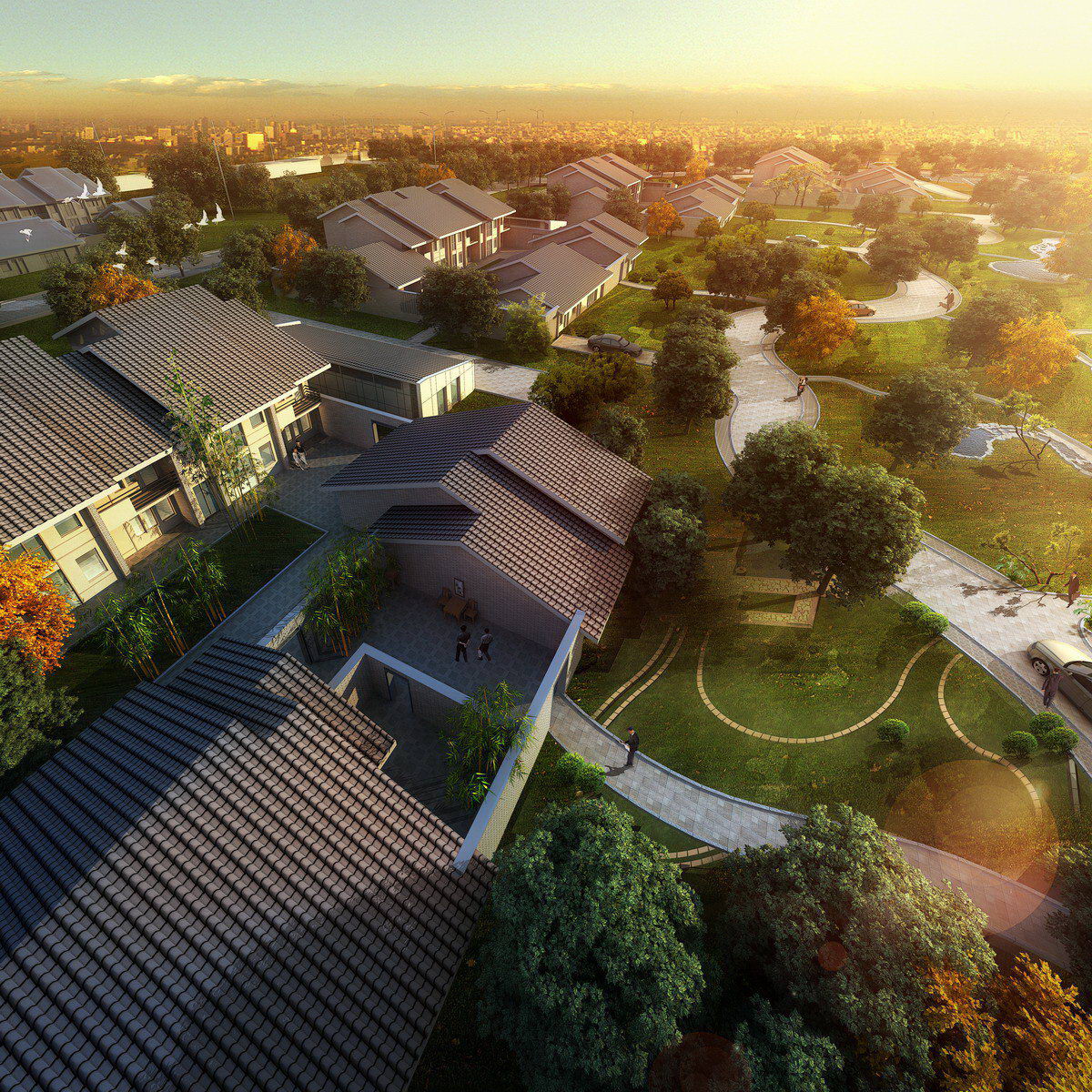

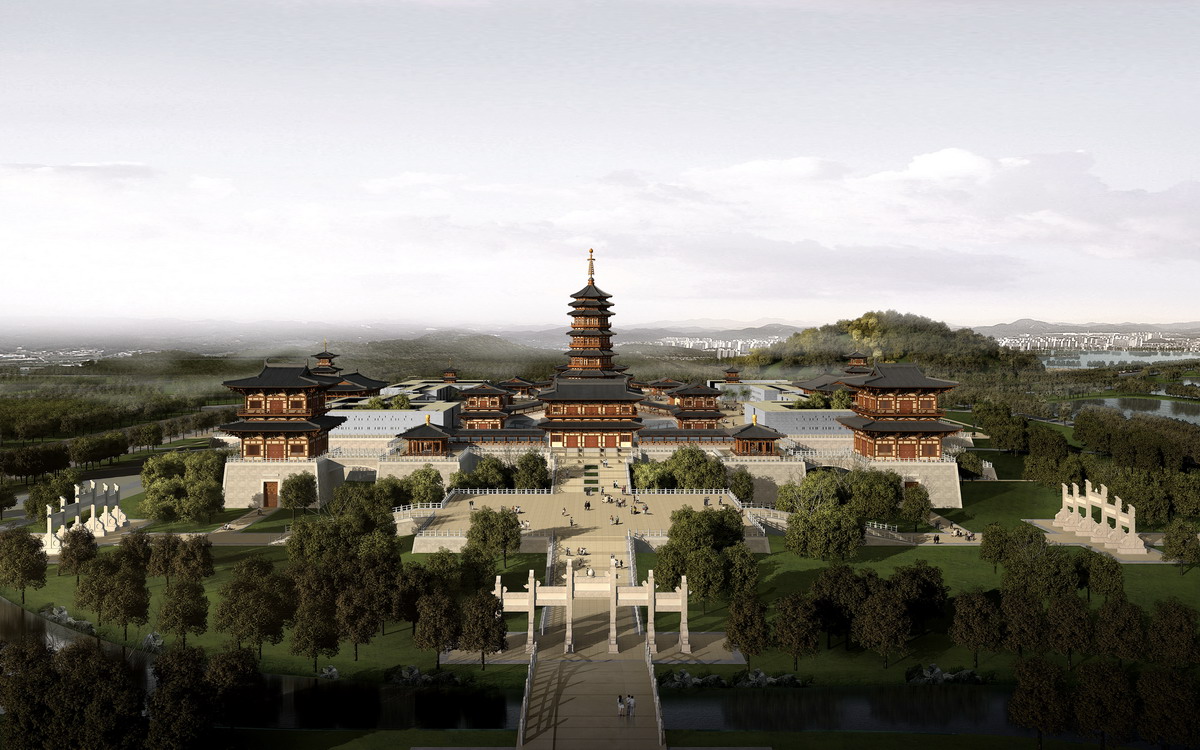
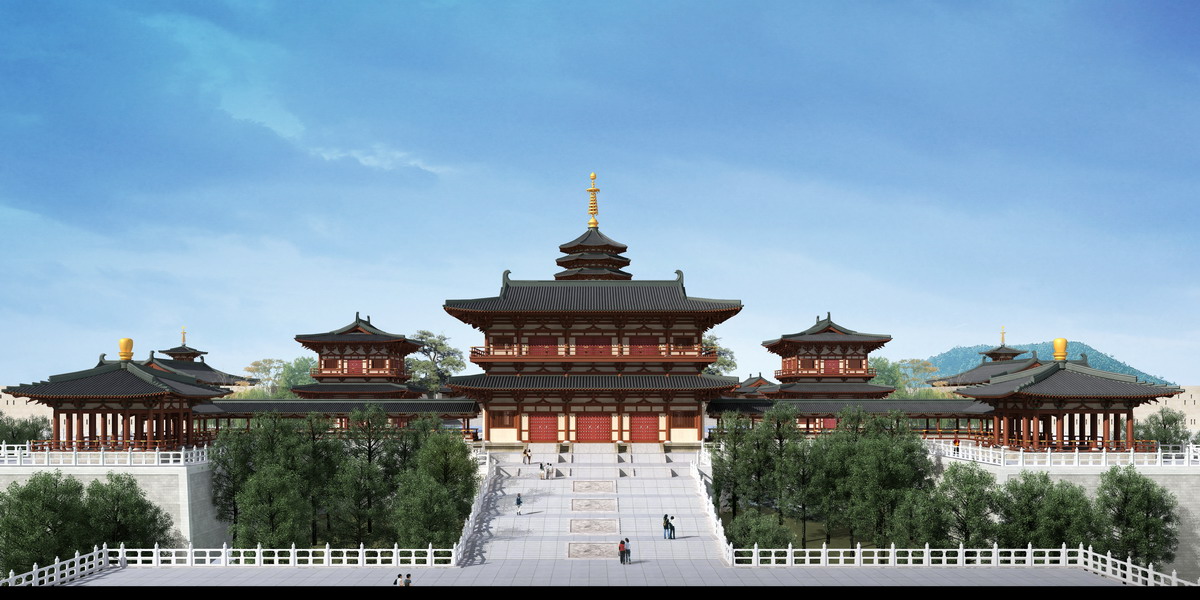

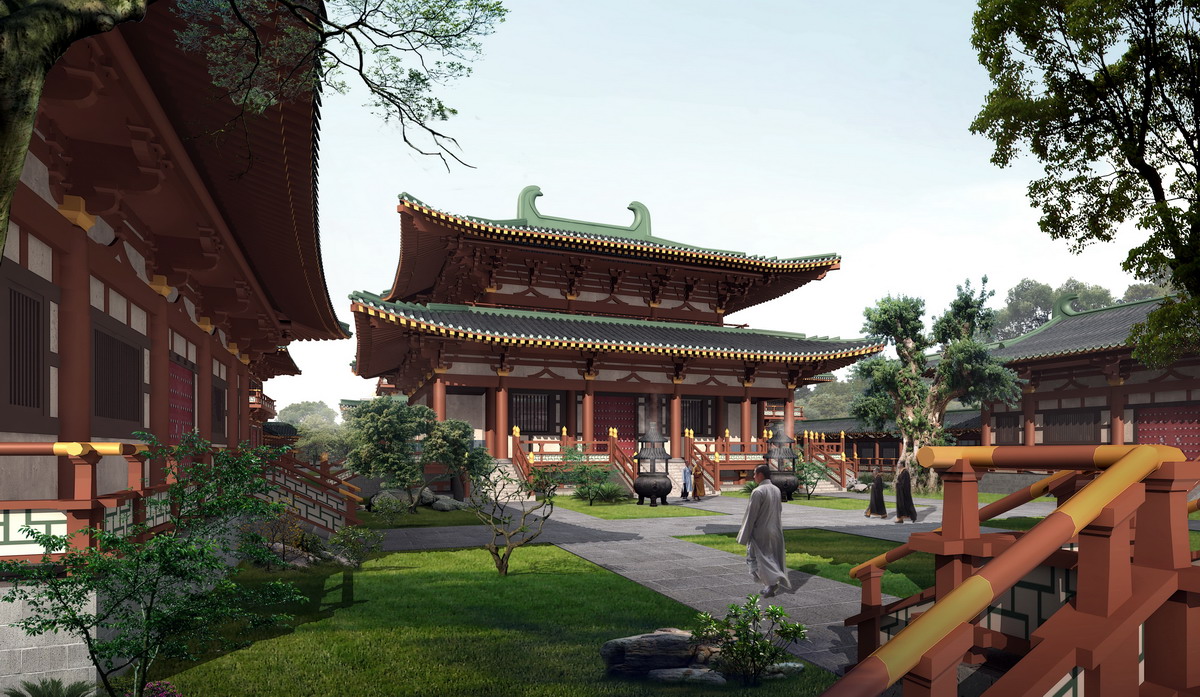
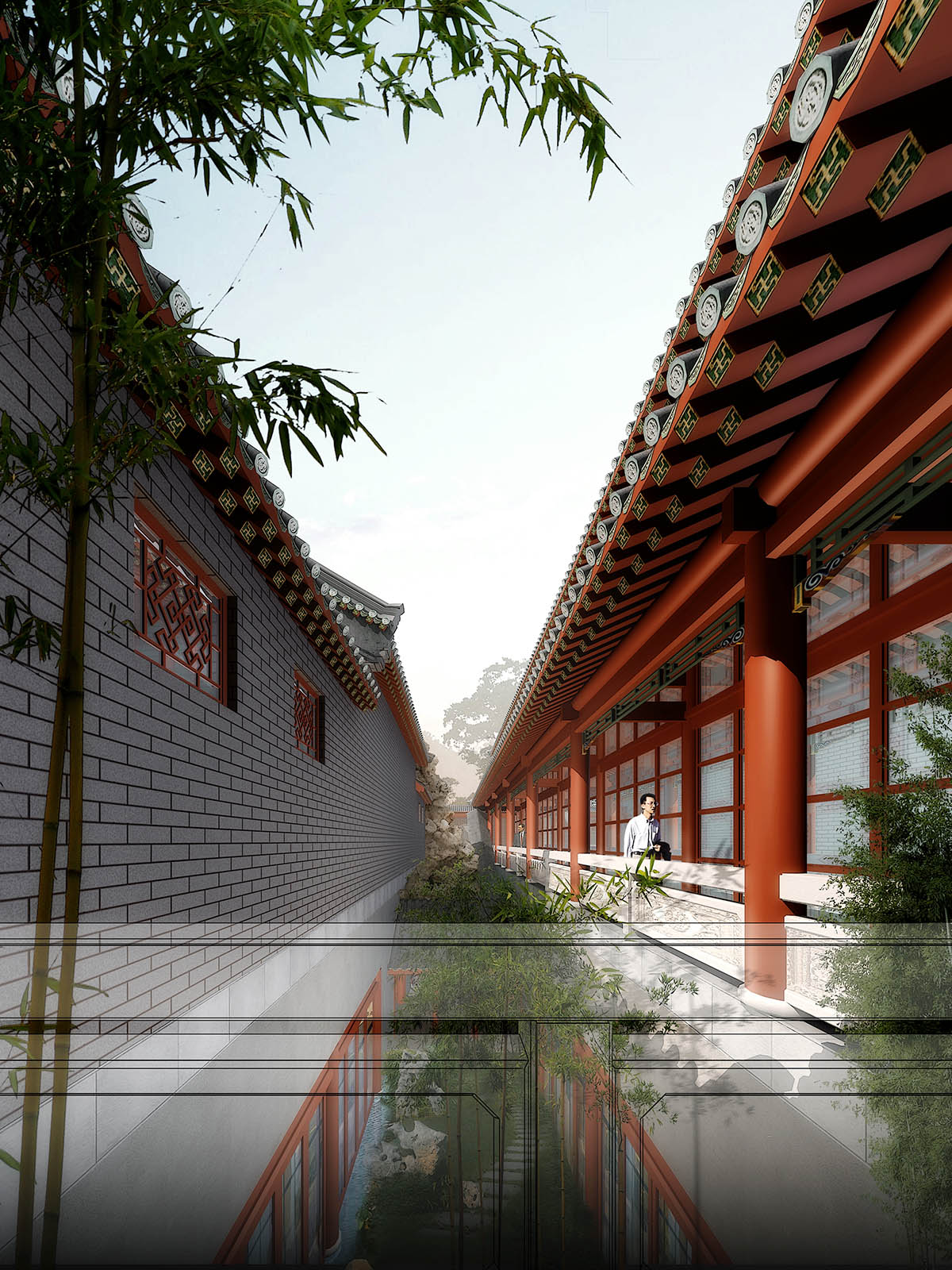

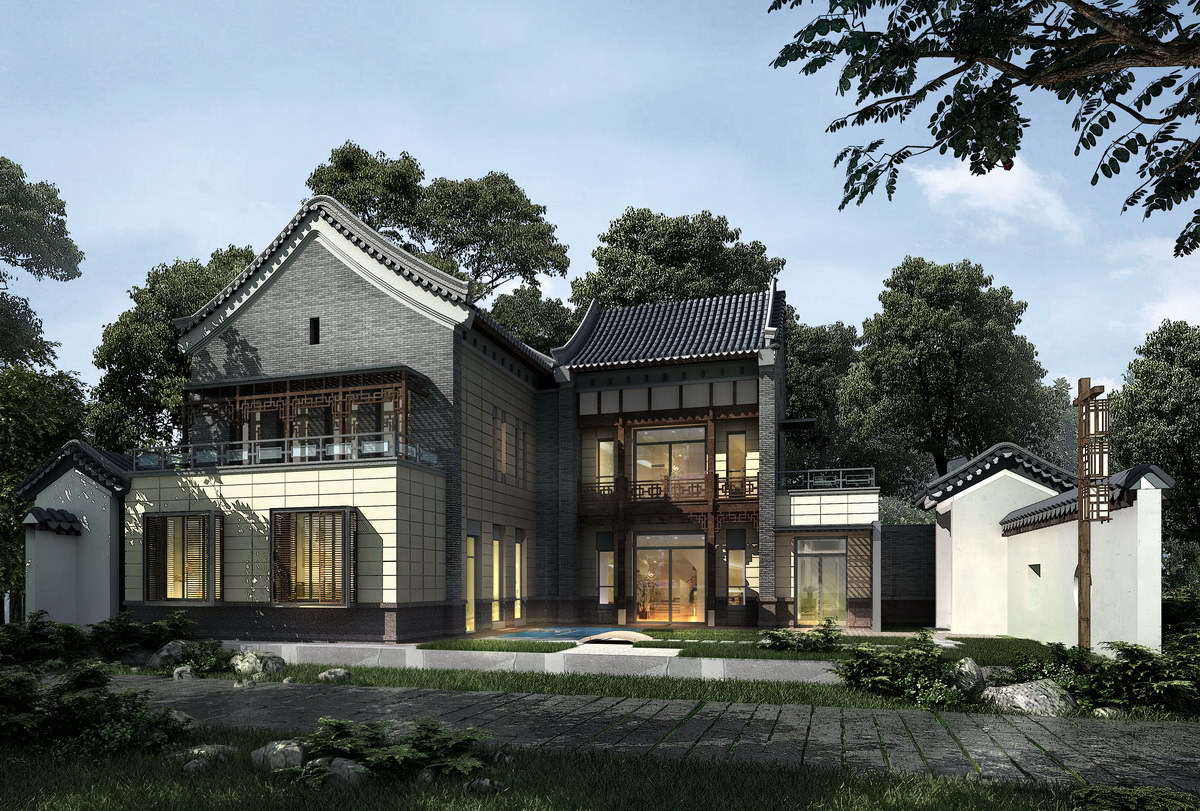
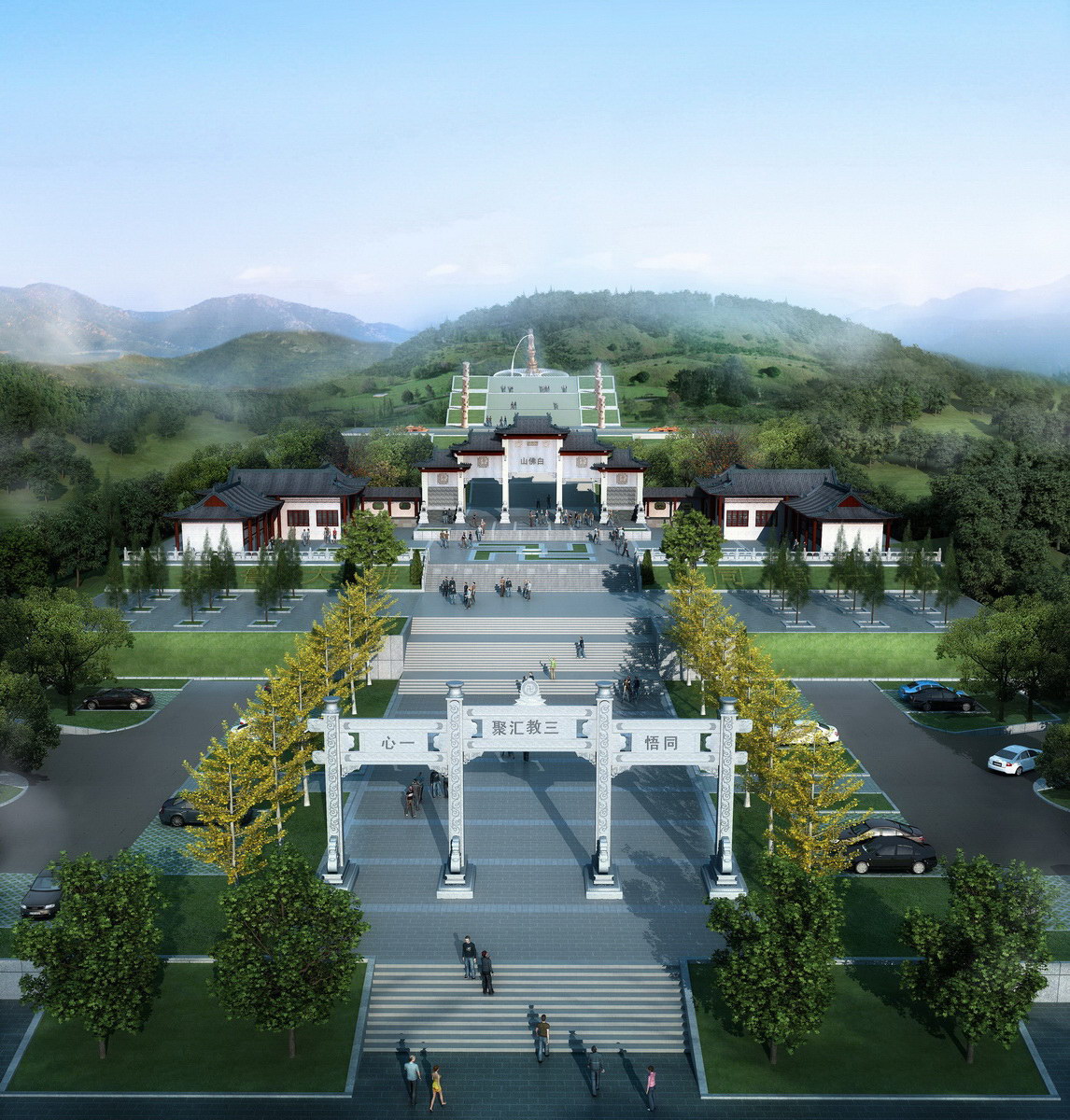
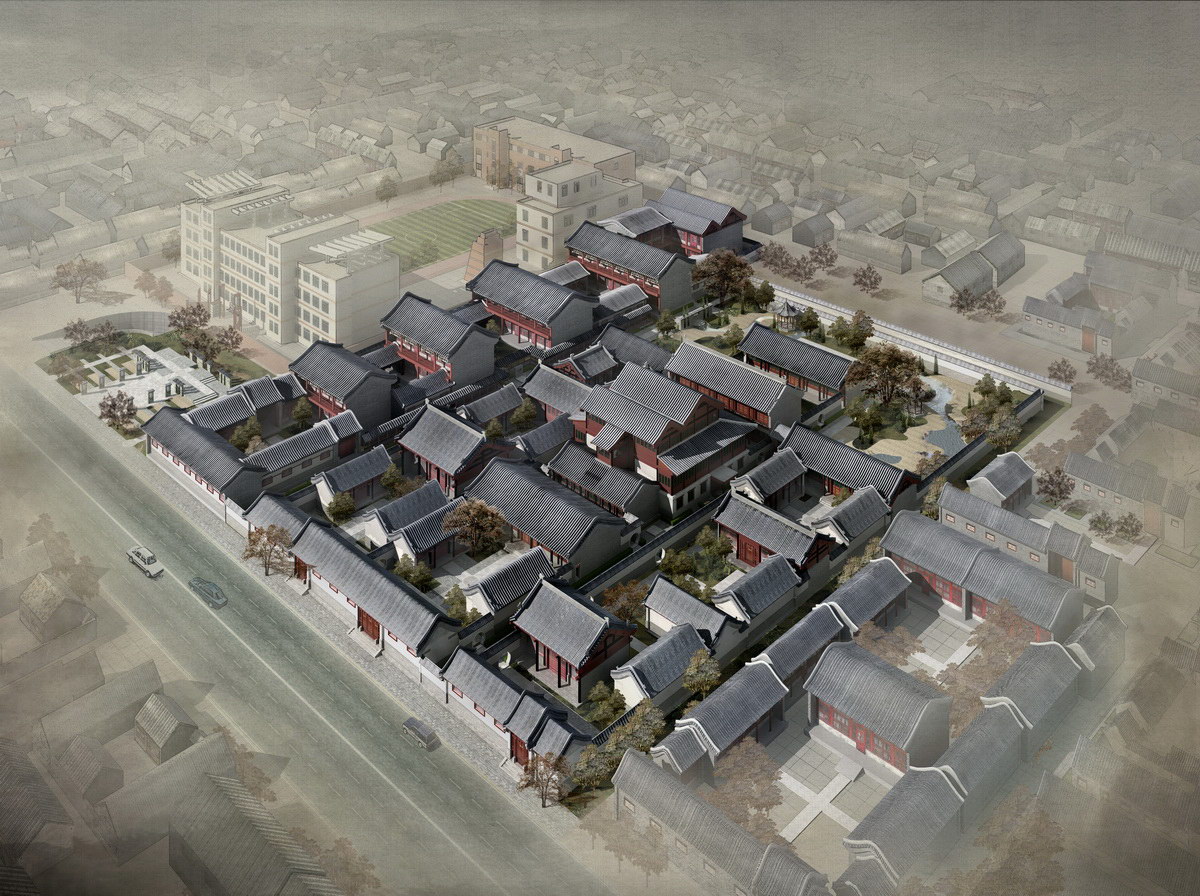
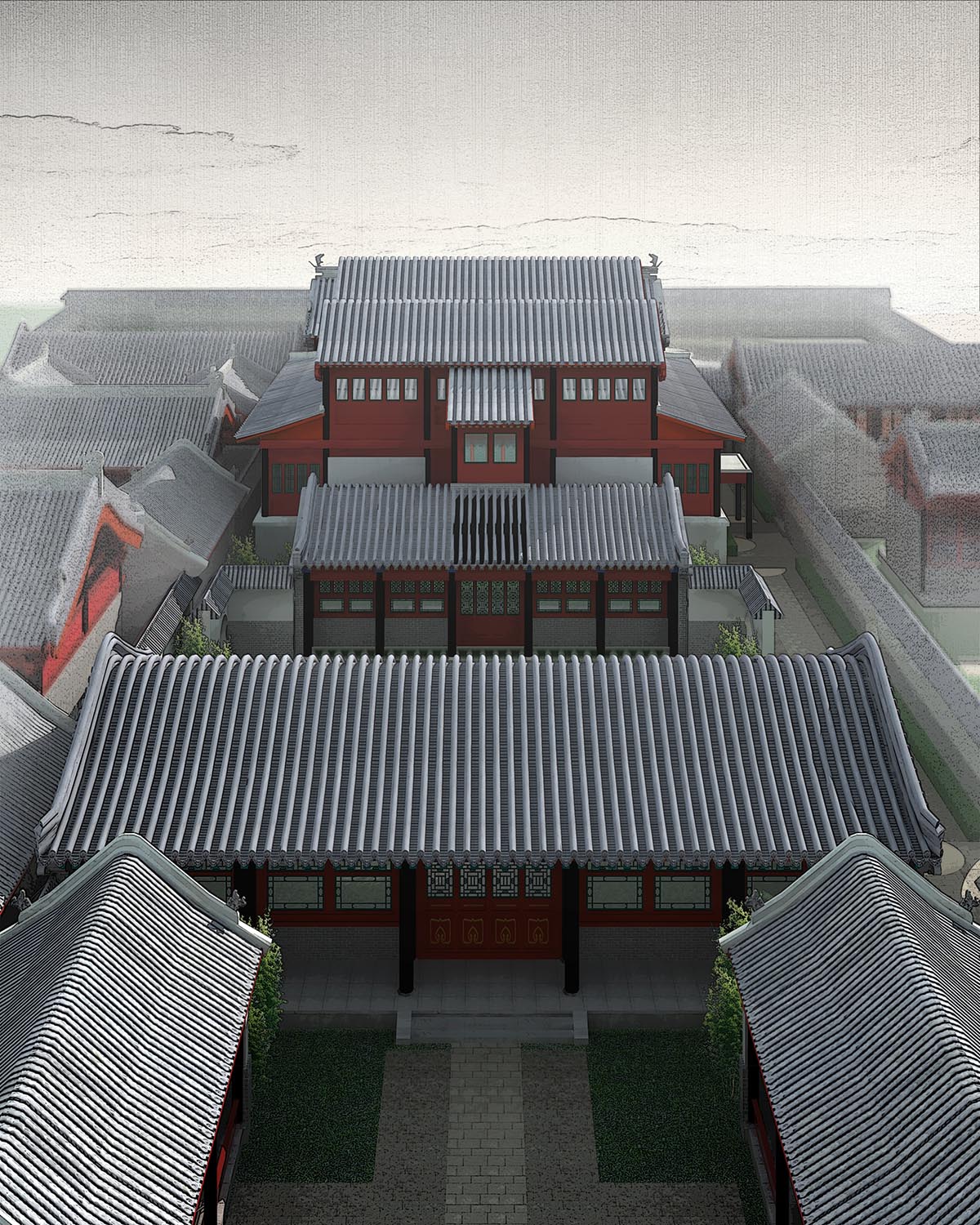
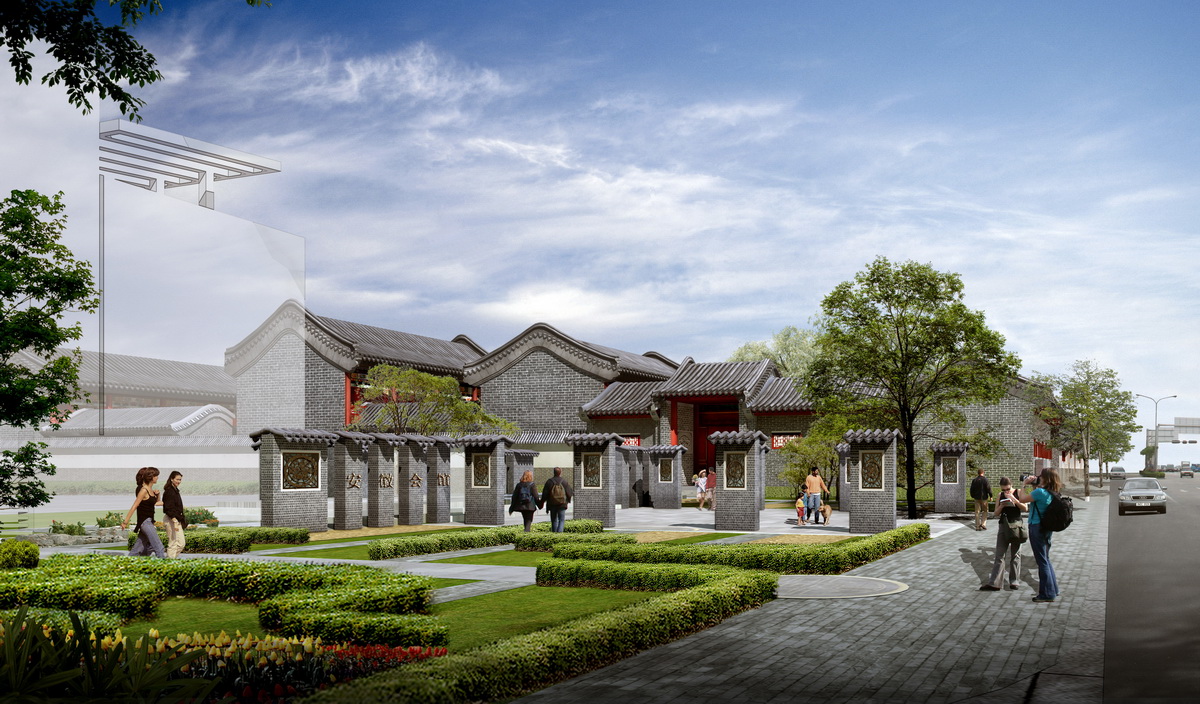
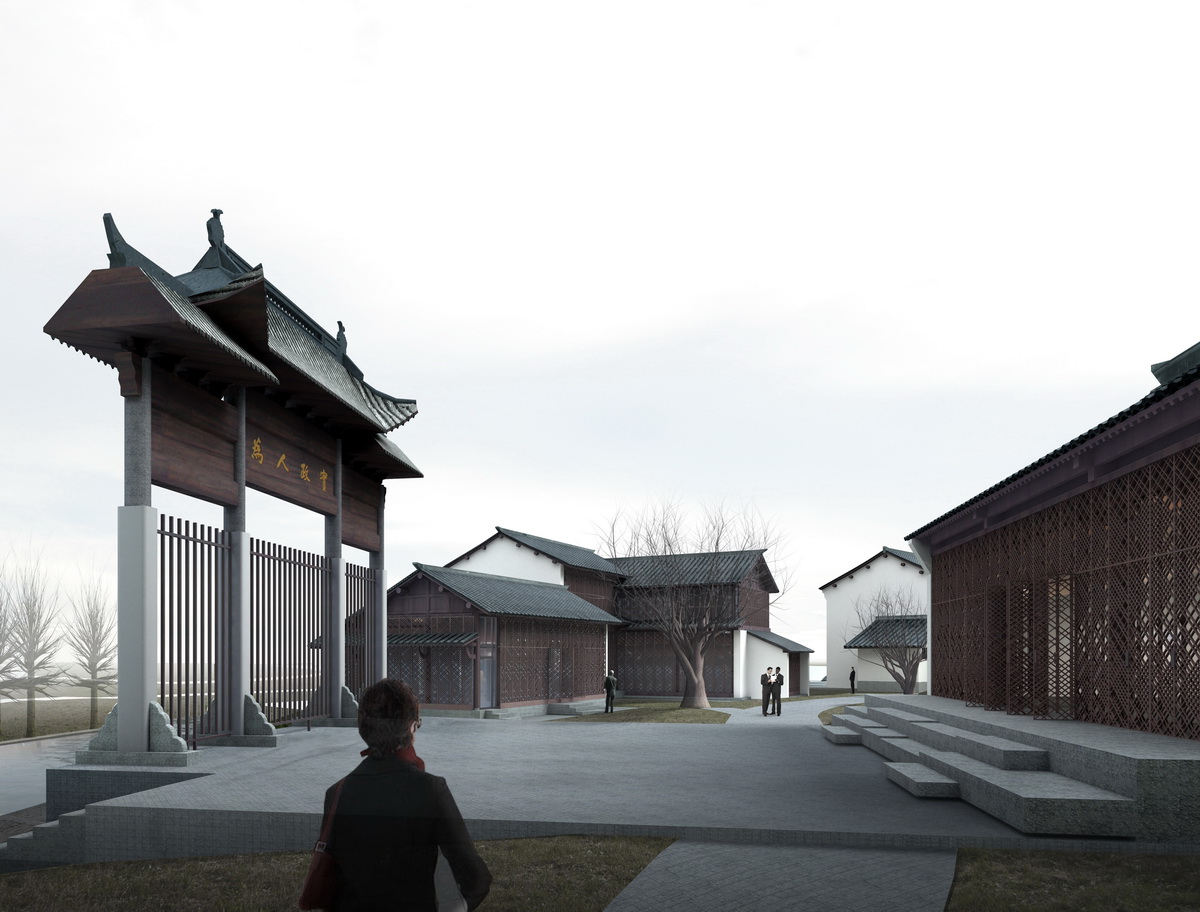
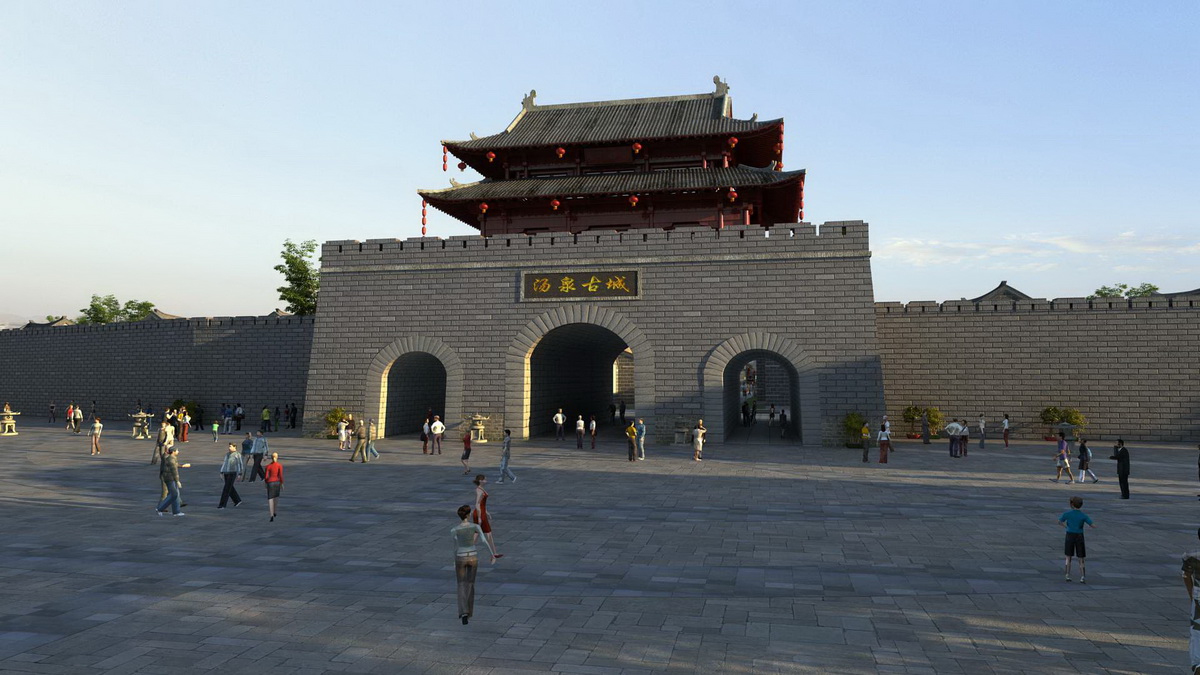

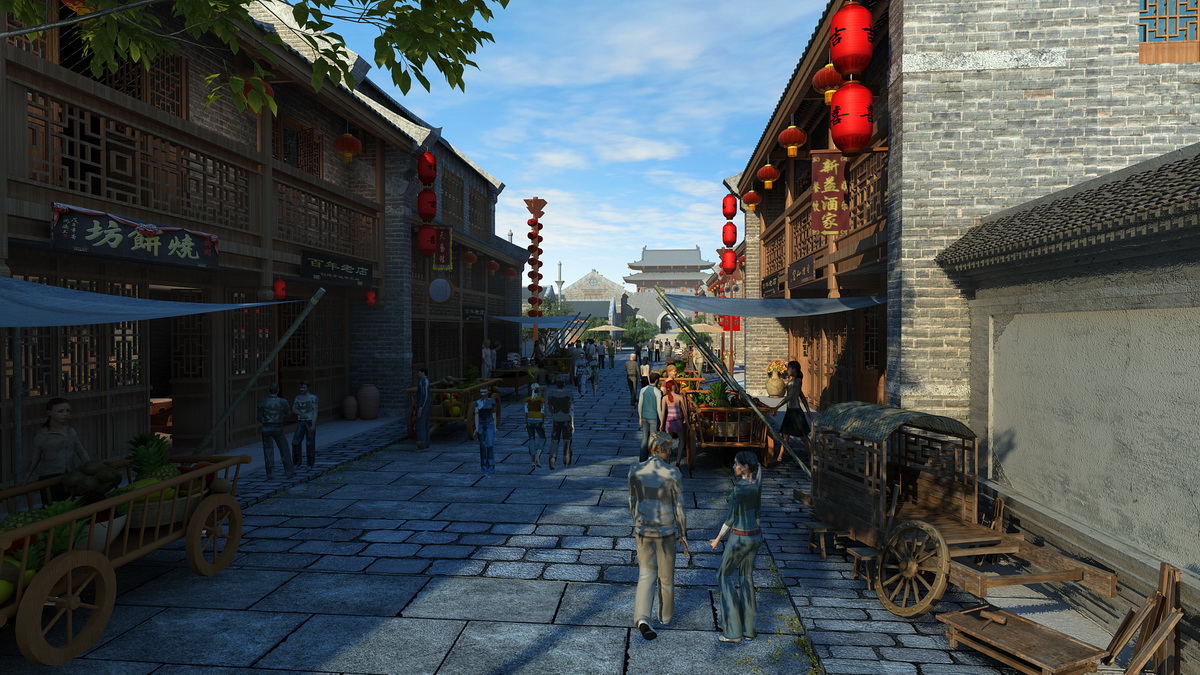
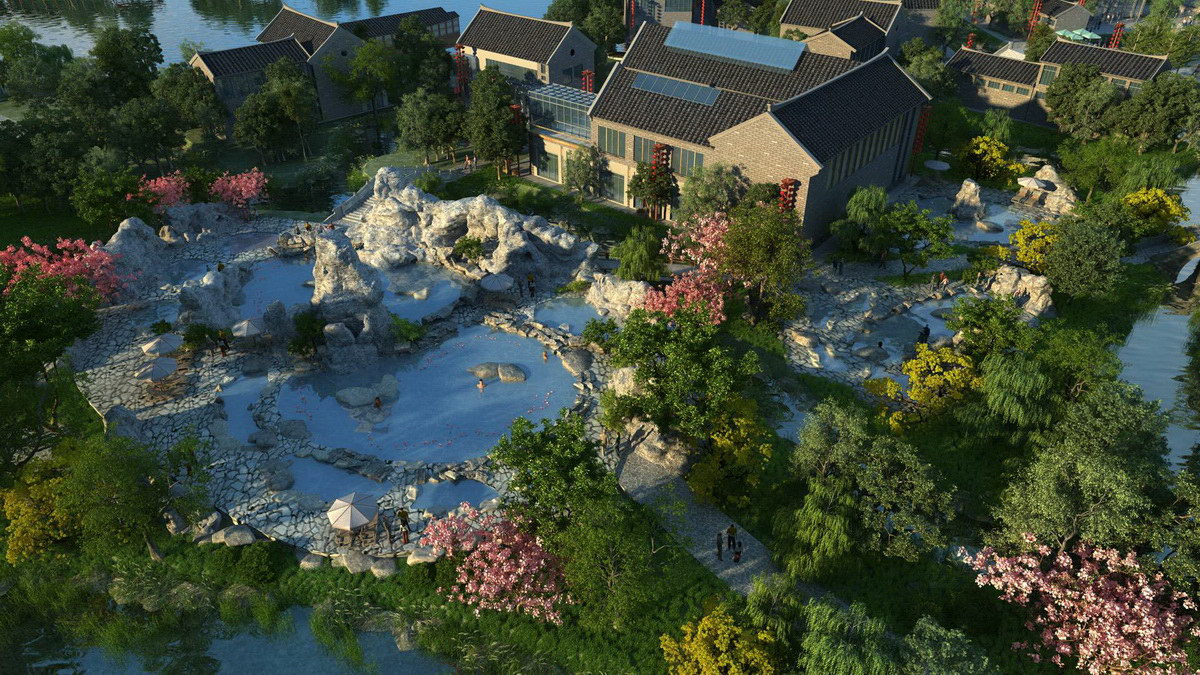
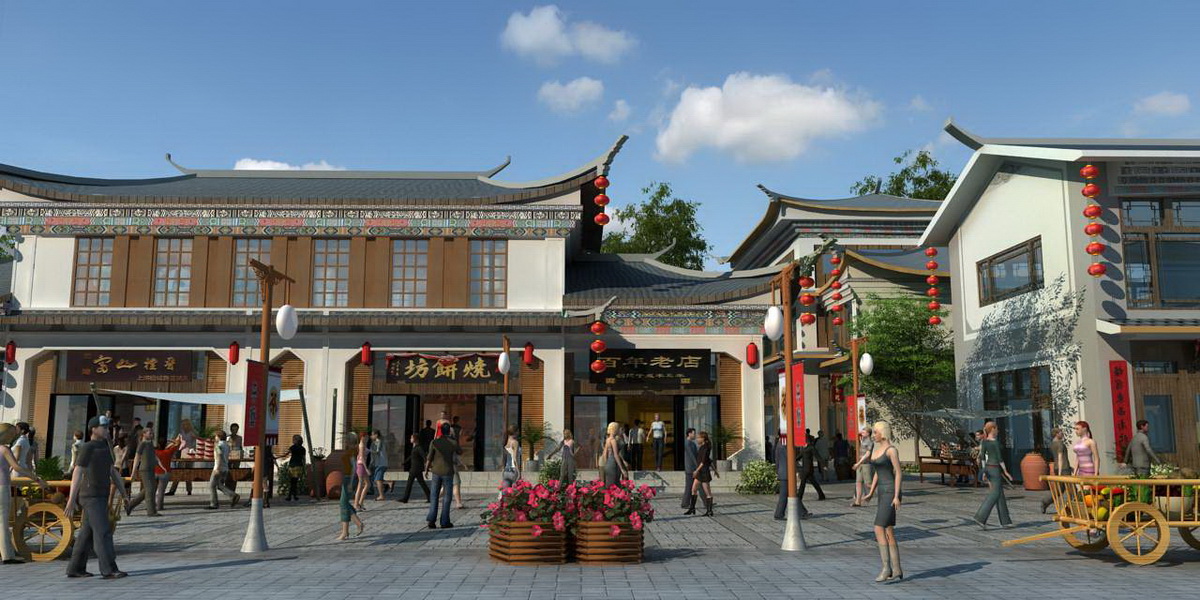
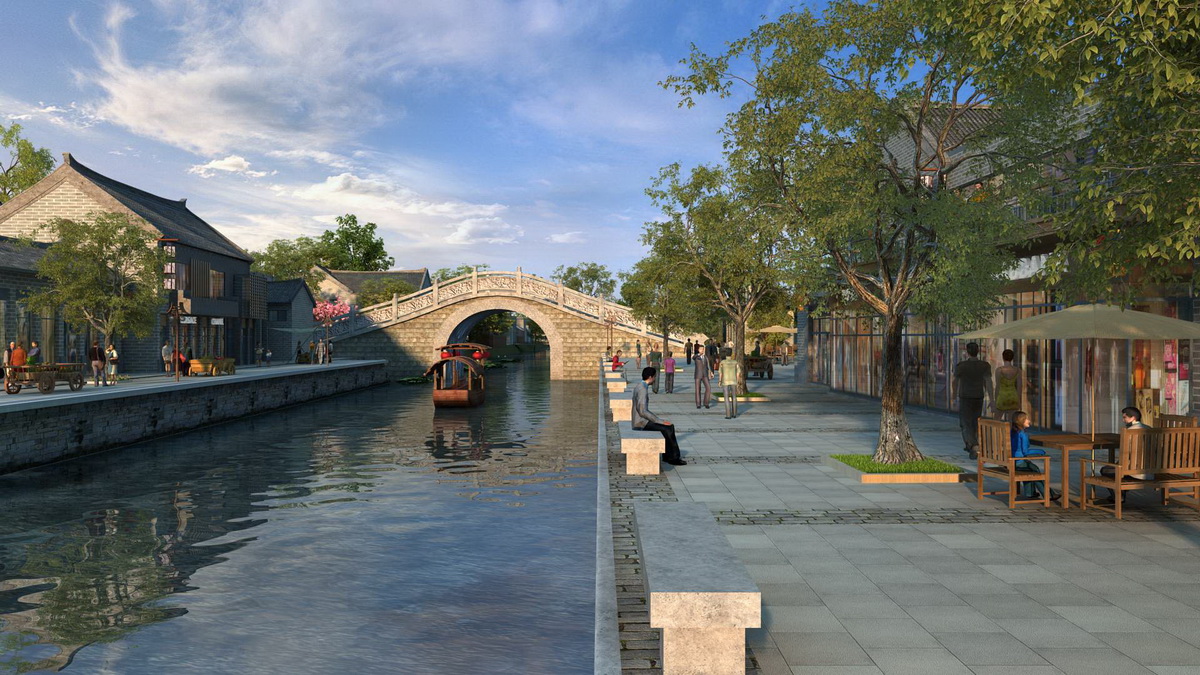
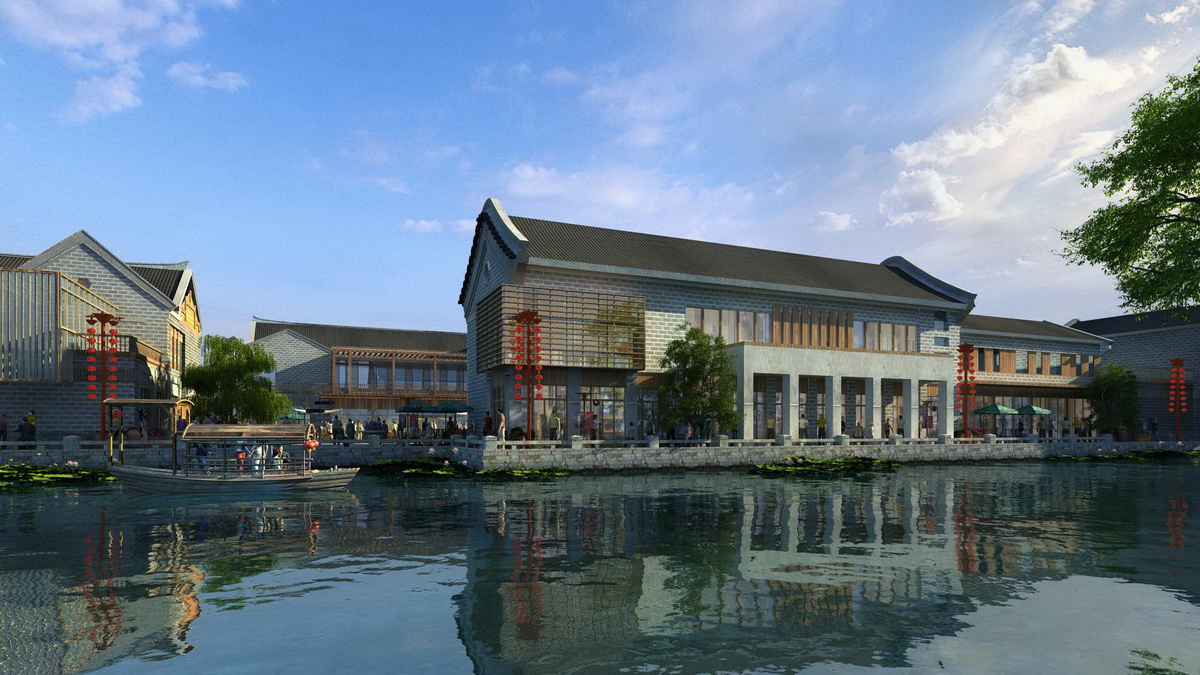
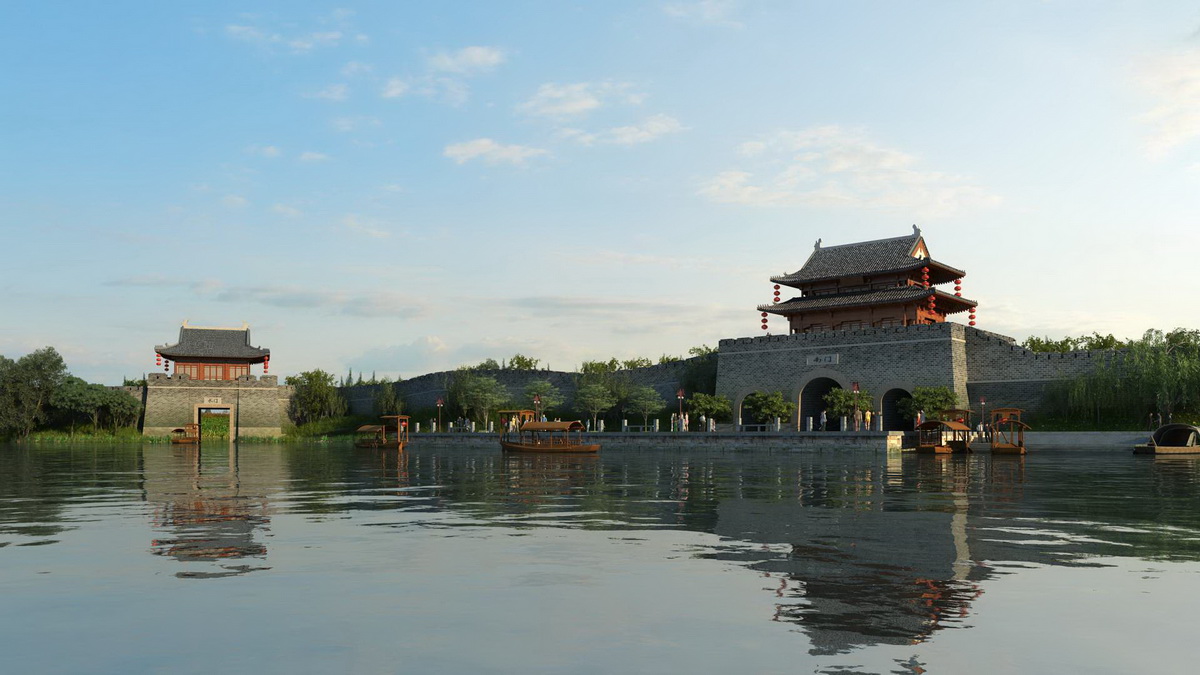
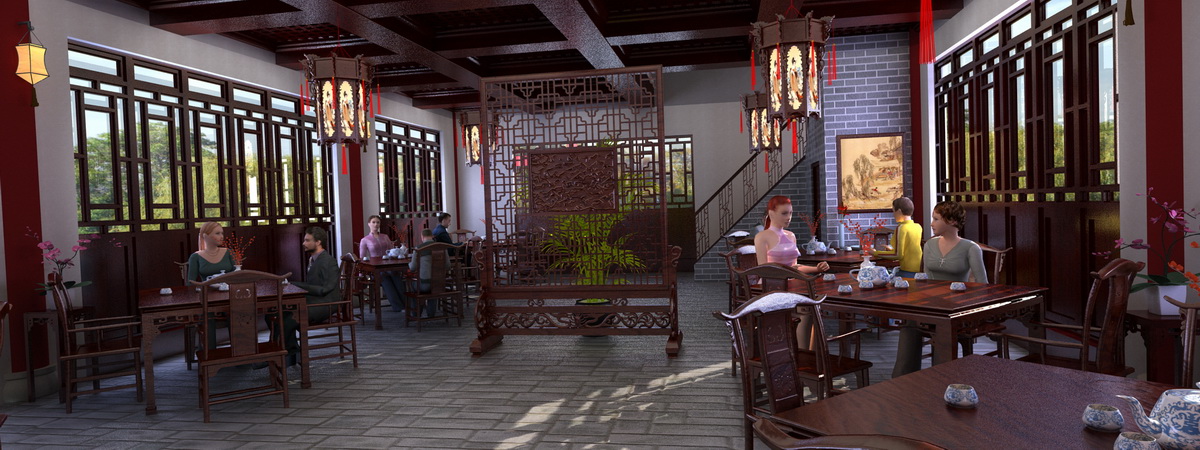
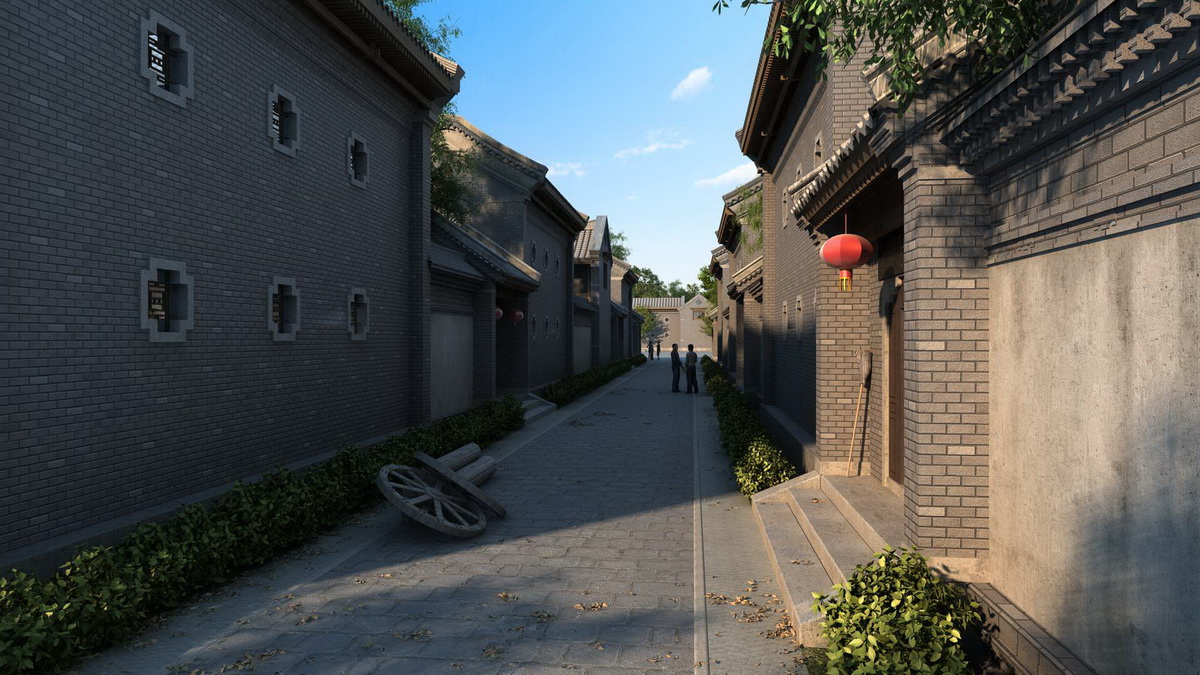
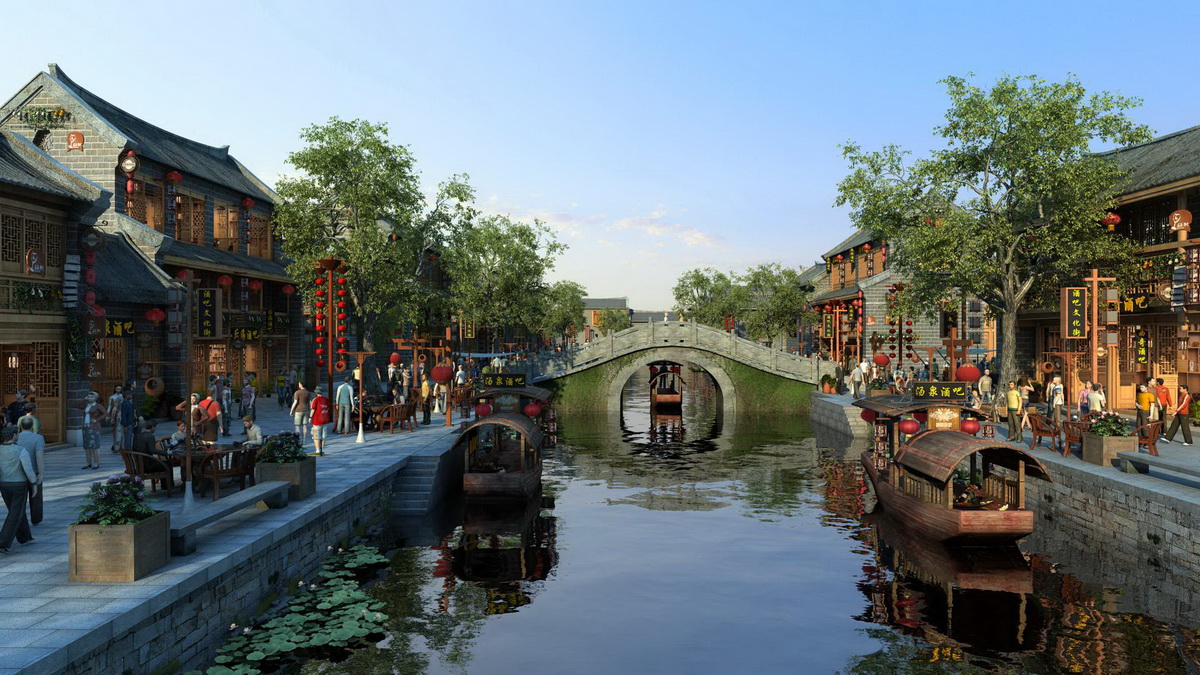
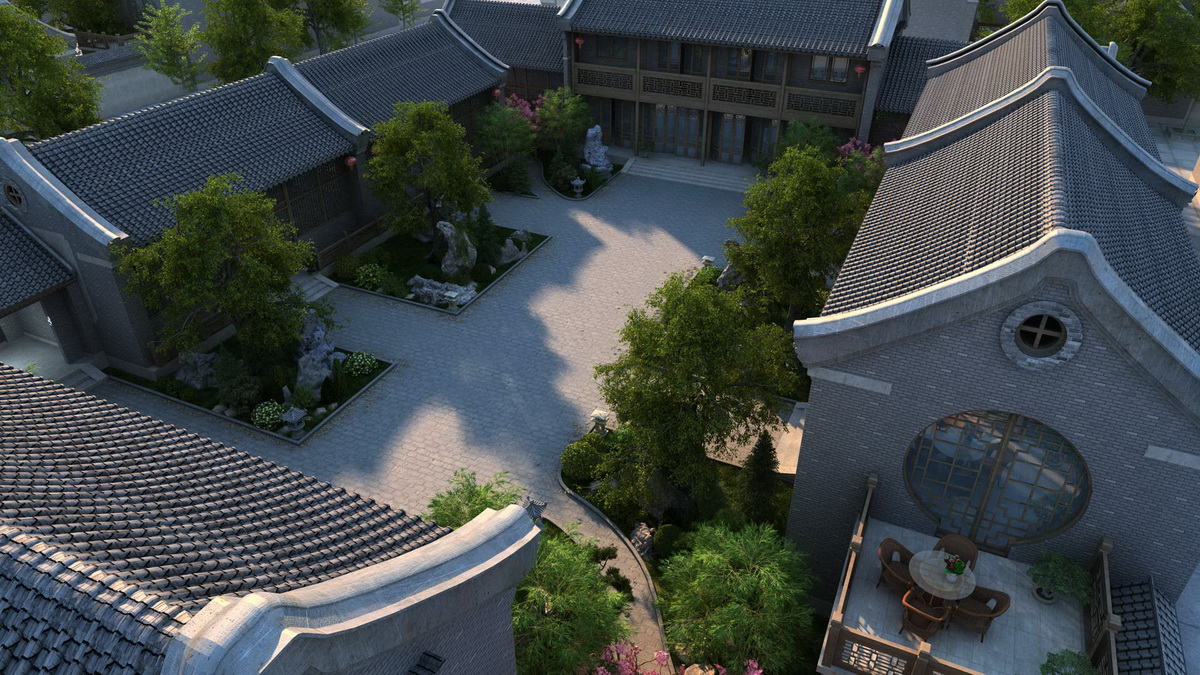
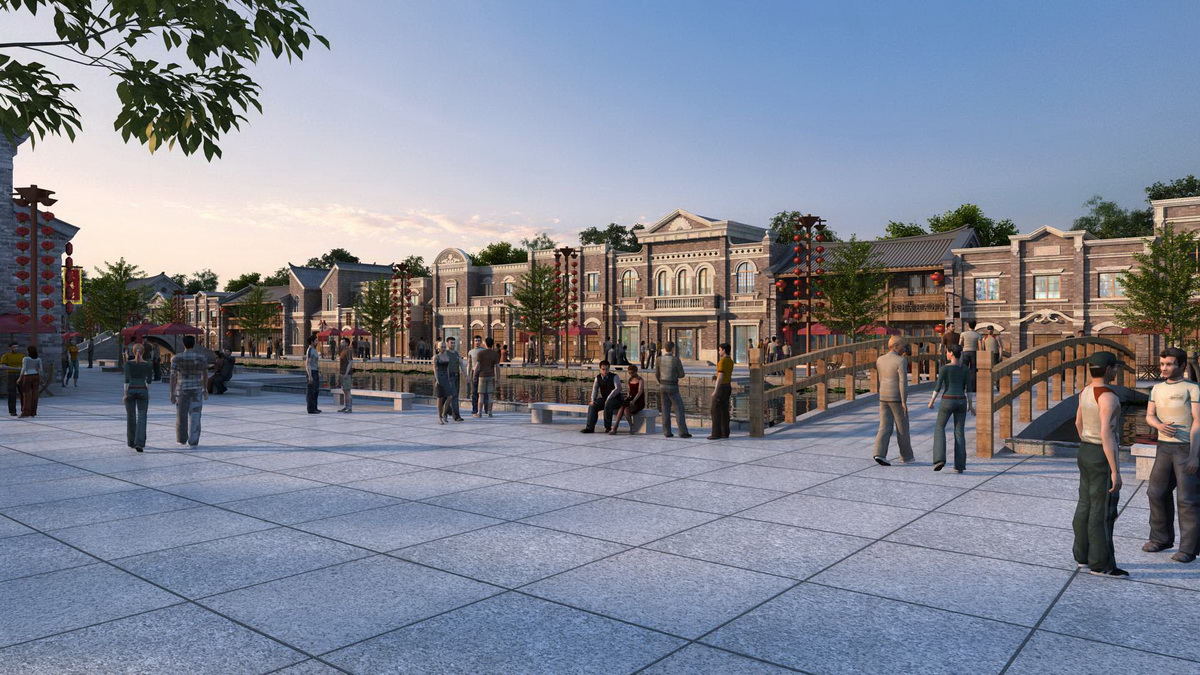
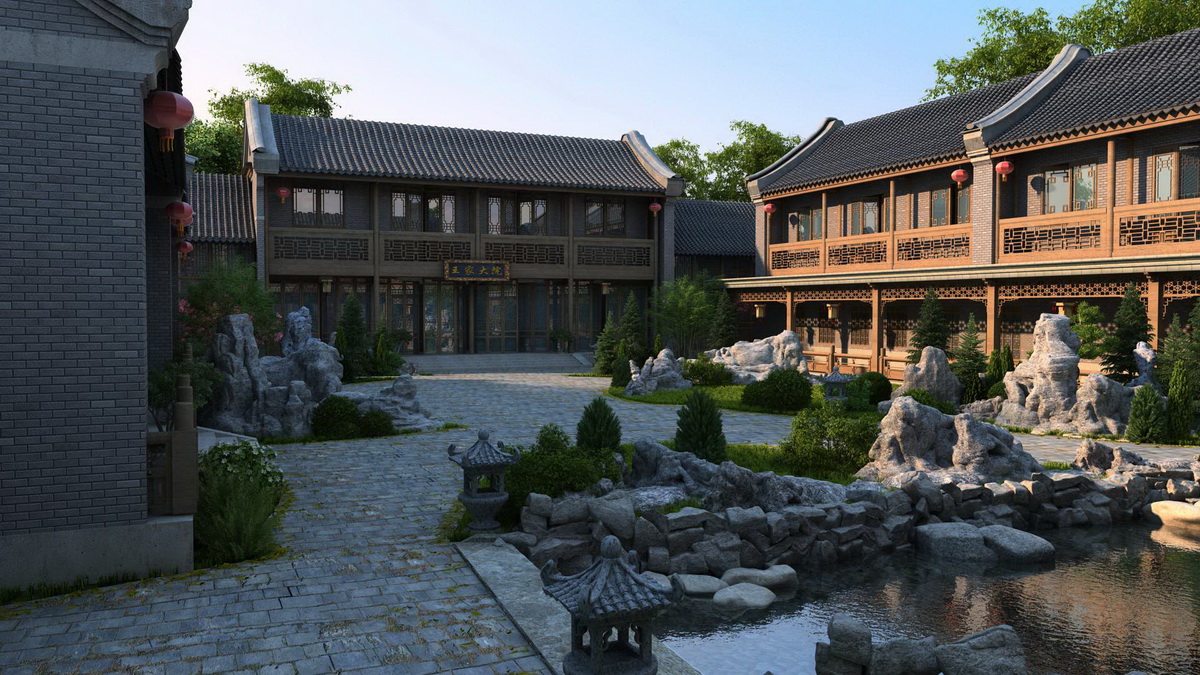
一、结构体系的造型表现力
木构框架的延展性
采用榫卯连接的木构架体系,通过模数化设计实现空间自由延伸,形成"墙倒屋不塌"的灵活布局,如佛光寺东大殿通过抬梁式架构支撑出23米跨度的无柱空间。斗拱系统兼具结构与装饰功能,应县木塔的54种斗拱组合在力学稳定性和视觉层次感上达到双重突破。
屋顶造型的多样性
庑殿顶、歇山顶等屋顶形式通过檐口起翘形成优美曲线,故宫太和殿的重檐庑殿顶以"举折"技术实现1:2.5的屋面坡度,既满足排水需求又强化建筑威严感。屋顶脊兽装饰兼具功能性(固定瓦件)与象征性(防火镇邪)。
二、空间组织的美学逻辑
轴线韵律与院落层次
采用中轴对称布局增强序列感,北京紫禁城7.8公里中轴线串联三大殿,通过台基高度差(太和殿8.13米)构建权力空间梯度。多进院落组合形成"步移景异"的体验,晋商大院通过三进四合院实现公私空间渐进转换。
虚实相生的界面处理
苏州园林的漏窗、门洞实现"框景"效果,如拙政园"梧竹幽居"亭通过月洞门将北寺塔纳入视觉构图,拓展空间纵深感。颐和园长廊运用透雕花窗,实现50%透光率与60%通风效率的平衡。
三、装饰美学的技术融合
构件装饰一体化
梁枋彩绘采用"一麻五灰"地仗工艺,敦煌莫高窟建筑油饰历经千年仍保有ΔE≤1.5的色差稳定性。徽派建筑马头墙的阶梯状造型既防火防风,又通过黑白对比形成地域标识。
材料表现的地域特征
闽南红砖厝运用胭脂砖拼贴出万字纹、龟背纹,实现5种以上立体拼花样式。山西悬空寺通过"铁扁担"悬挑技术,使木构建筑与峭壁形成虚实对比的视觉效果。
四、生态智慧的造型表达
气候适应性造型
岭南镬耳屋的曲线山墙可增加25%通风效率,同时反射30%太阳辐射。江南园林的"粉墙黛瓦"配色方案,通过高反射率材料降低夏季室内温度2-3℃。
生物链参与式设计
采用可降解材料的"生态循环"体系,如蒙古包木构架可在搬迁后自然分解,实现零建筑垃圾。福建土楼夯土墙体内置竹筋,既增强结构韧性又促进材料再生。
五、文化意象的符号转译
等级制度的空间编码
屋顶形制严格对应社会等级,如故宫角楼采用十字脊顶(皇室专属),与民间硬山顶形成制度区隔。彩画制度中,和玺彩画(龙纹)仅限皇家建筑使用。
哲学思想的形态隐喻
天坛圜丘通过三重坛台、九层踏步象征"天圆地方"宇宙观,数字组合暗合阳数极数"九"的文化内涵。山西永乐宫三清殿的"减柱造"布局,通过8根内柱象征八卦方位。
注:现代设计可借鉴斗拱模数化(如参数化设计)、庭院渗透性(如开放式商业综合体)等造型基因,在数字化建模中需同步记录构件纹理(BIM模型LOD400精度标准)以实现文化传承。
六、核心设计原则
原真性保护
严格遵循《中国文物古迹保护准则》,采用传统材料(如杉木、青砖)与工艺(榫卯结构、一麻五灰地仗)进行修复
山西应县木塔案例显示:54种斗拱组合需按辽代原制复原,禁止使用现代金属连接件
功能活化策略
空间重组:五台山佛光寺东大殿通过加装可逆式玻璃幕墙,实现文物展示与温湿度控制双重功能
结构加固:岭南地区采用碳纤维布包裹木柱,既保持外观又提升抗震性能(抗剪强度提升40%)
七、关键技术措施
防潮防腐体系
柱础抬升:江南地区将木柱底部抬高30cm,配合火山岩基座形成防潮层
屋面改良:北京故宫太和殿采用"苫背-锡背-瓦面"三层防水构造,渗漏率下降至0.5㎡/年
数字化应用
BIM技术建立山西永乐宫三维模型,精确记录2.8万处构件变形数据
应县木塔通过激光扫描发现54处斗拱隐性损伤,指导针对性修复
八、实施流程规范
勘察阶段:采用红外热像仪检测木构件内部腐朽情况
施工阶段:斗拱组装需执行"分层挂线、逐攒校验"标准,平面误差≤3mm
验收标准:油饰彩绘色差ΔE≤1.5(CIE LAB标准)
接着我们再对典型古建筑效果图造型案例分析
一、潞安府城隍庙(元明清建筑交融)
六龙壁与木构艺术
琉璃照壁以六条蟠龙浮雕展现民间工艺,木牌楼采用纯榫卯结构,额枋彩绘保留三国故事与神话场景,玄鉴楼藻井以螺旋状斗拱实现几何美学与声学设计的统一。
空间布局特色
遵循“一进三院”轴线布局,中大殿采用元代减柱法营造开阔空间,面阔五间、进深六椽的歇山顶结构形成无遮挡视野。
二、马桥天主堂(中西合璧造型)
钟楼与附楼融合
红砖清水墙面的西式附楼与中式木梁结构主堂形成对比,钟楼顶端十字架造型成为地域标志,珐琅彩绘窗棂保留19世纪工艺特征。
功能复合设计
原教堂建筑经改造后兼具礼堂、仓库等功能,复建时保留马尾松古树景观,形成砖墙与铁栅栏围合的院落空间。
三、北京故宫(皇家建筑典范)
重檐庑殿顶造型
太和殿采用1:2.5屋面坡度与双层飞檐,脊兽装饰兼具固定瓦件与等级象征功能,黄色琉璃瓦与红色墙体形成视觉张力。
轴线空间序列
7.8公里中轴线串联三大殿,台基高度差(太和殿8.13米)强化权力象征,九千余间房屋形成“前朝后寝”规制。
四、福建土楼(防御性民居)
夯土围合结构
圆形/方形平面直径可达60米,3米厚夯土墙内置竹筋增强韧性,三层以上设置瞭望孔与射击口。
生态营造智慧
内院水井与排水系统构成自循环体系,檐廊出挑2米形成遮阳通道,聚族而居模式实现200-800人共居。
五、苏州园林(江南庭院美学)
粉墙黛瓦配色
白灰抹面墙体反射60%以上阳光,黑瓦坡度25°适应多雨气候,漏窗月洞门形成“移步换景”视觉渗透。
水体庭院布局
拙政园以水域占比35%构建空间骨架,曲廊连通厅堂轩榭,太湖石假山高度控制在视线1.5倍范围内。
六、应县木塔(木构巅峰)
斗拱结构体系
八角形平面54种斗拱组合,暗层斜撑形成现代桁架雏形,塔身采用分层柱网收分实现1:0.9高宽比。
抗震性能表现
柔性榫卯节点可消解地震能量,历经40余次地震仍保持整体稳定,现存最大木构楼阁式塔(67.31米)。
以上案例通过特定构造语言(如斗拱模数、屋面举折)与空间组织逻辑,展现了古建筑在功能、美学与文化象征方面的造型创造力。现代参数化设计可借鉴其模数体系与生态适应性原理。
来源:专业的效果图公司,追求卓越18年的三维图制作经验,承接厂房/车间/仓储/别墅/民宿/农庄/加油站/办公楼/会所/景观/园林/古建/祠堂/工程/亮化/道路/桥梁/幕墙/展馆/室内类效果图制做,覆盖拌合站工程|工业|产品|机械|设备|生产流水线|钢结构领域的3d效果图制做,结合3D动画全景图交互渲染技术助力,提升设计方案创新和互动的的品质!—高维设计
1、 The expressive power of structural system modeling
The extensibility of wooden frames
The wooden frame system connected by mortise and tenon joints is used to achieve free extension of space through modular design, forming a flexible layout of "wall collapse without collapse". For example, the East Hall of Foguang Temple supports a column free space with a span of 23 meters through a beam lifting structure. The arch of wooden architecture system has both structural and decorative functions. The 54 kinds of arch of wooden architecture combinations of Yingxian wooden tower have achieved double breakthroughs in mechanical stability and visual hierarchy.
Diversity of roof shapes
The roof forms such as the roof of the palace and the gable top are formed into beautiful curves through the raised eaves. The double eaved roof of the Taihe Hall in the Forbidden City uses the "lifting and folding" technology to achieve a 1:2.5 roof slope, which not only meets the drainage needs but also enhances the sense of architectural majesty. The roof roof figures decoration is both functional (fixed tile) and symbolic (fire prevention and evil suppression).
2、 The aesthetic logic of spatial organization
Axis rhythm and courtyard hierarchy
Adopting a symmetrical layout along the central axis to enhance the sense of sequence, the 7.8-kilometer central axis of the Forbidden City in Beijing connects the three main halls, and a power space gradient is constructed through the height difference of the pedestal (8.13 meters for the Hall of Supreme Harmony). The combination of multiple courtyards creates an experience of "step by step scenery difference", and the Jin Merchant Courtyard gradually transforms public and private spaces through three courtyard houses.
Interface processing of virtual real interaction
The leaking windows and door openings in Suzhou gardens achieve a "frame view" effect, such as the "Wuzhu Youju" pavilion in the Humble Administrator's Garden, which incorporates the North Temple into the visual composition through the Moon Cave Gate, expanding the spatial depth. The Summer Palace corridor uses carved flower windows to achieve a balance between 50% light transmittance and 60% ventilation efficiency.
3、 Technical integration of decorative aesthetics
Integrated component decoration
Liang Fang's color painting adopts the "one hemp and five ashes" ground battle process, and the architectural oil decoration of the Mogao Grottoes of Dunhuang still retains the color difference stability of Δ E ≤ 1.5 after thousands of years. The stepped design of the horse head wall in Huizhou style architecture is both fire-resistant and windproof, and forms a regional identity through black and white contrast.
Regional characteristics of material representation
Minnan red brick houses use rouge bricks to create ten thousand character patterns and turtle back patterns, achieving more than 5 three-dimensional flower patterns. Shanxi Hanging Temple uses the "iron pole" cantilever technology to create a visual effect of virtual and real contrast between wooden buildings and cliffs.
4、 The expression of ecological wisdom in form
Climate adaptive styling
The curved mountain wall of Lingnan Guo'er House can increase ventilation efficiency by 25% and reflect 30% of solar radiation. The color scheme of "pink walls and black tiles" in Jiangnan gardens reduces indoor temperature by 2-3 ℃ in summer through high reflectivity materials.
Participatory design of the food chain
The "ecological cycle" system using biodegradable materials, such as the Mongolian yurt wooden frame, can naturally decompose after relocation, achieving zero construction waste. The rammed earth wall of the Earthen Building in Fujian Province has bamboo bars, which not only enhance the structural toughness but also promote the material regeneration.
5、 Translation of Cultural Symbols
Spatial coding of hierarchical system
The roof shape strictly corresponds to the social class. For example, the corner tower of the Forbidden City adopts the cross ridge roof (exclusive to the royal family), which forms a system separation from the folk gable roof. In the color painting system, the use of Hexi color painting (dragon pattern) is limited to royal buildings.
Metaphorical Forms of Philosophical Thought
The circular dome of the Temple of Heaven symbolizes the cosmology of "round sky and square earth" through a triple altar platform and nine levels of steps, and the combination of numbers is in harmony with the cultural connotation of the "nine" of the Yang number pole. The layout of the Sanqing Hall in Yongle Palace, Shanxi Province, is characterized by the use of eight inner columns to symbolize the orientation of the Eight Trigrams.
Note: Modern design can draw lessons from modeling genes such as arch of wooden architecture modularization (such as parametric design), courtyard permeability (such as open commercial complex), etc. In digital modeling, component texture (BIM model LOD400 precision standard) needs to be recorded synchronously to achieve cultural inheritance.
6、 Core design principles
Authenticity protection
Strictly follow the "Guidelines for the Protection of Chinese Cultural Relics and Historic Sites", and use traditional materials (such as cedar and green bricks) and techniques (mortise and tenon structure, one hemp and five gray ground stakes) for restoration
The case of Yingxian wooden tower in Shanxi shows that 54 kinds of arch of wooden architecture combinations need to be restored according to the original system of the Liao Dynasty, and the use of modern metal connectors is prohibited
Functional activation strategy
Space reorganization: the east hall of Foguang Temple in Mount Wutai is equipped with reversible glass curtain wall to realize the dual functions of cultural relics display and temperature and humidity control
Structural reinforcement: In the Lingnan region, carbon fiber cloth is used to wrap wooden columns, which not only maintains their appearance but also improves their seismic performance (with a 40% increase in shear strength)
7、 Key technical measures
Moisture proof and anti-corrosion system
Column base lifting: In the Jiangnan region, the bottom of the wooden column is raised by 30cm to form a moisture-proof layer in conjunction with the volcanic rock base
Roof improvement: The Taihe Hall of the Forbidden City in Beijing adopts a three-layer waterproof structure of "tarpaulin back tin back tile surface", reducing the leakage rate to 0.5 square meters per year
Digital applications
BIM technology establishes a 3D model of Yongle Palace in Shanxi, accurately recording deformation data of 28000 components
Yingxian wooden tower found 54 hidden damages of arch of wooden architecture through laser scanning, guiding targeted repair
8、 Implement process specifications
Survey stage: Use infrared thermal imager to detect the internal decay of wooden components
Construction stage: arch of wooden architecture assembly needs to implement the standard of "layer by layer line hanging and accumulation by accumulation verification", and the plane error is ≤ 3mm
Acceptance criteria: Oil decoration color difference Δ E ≤ 1.5 (CIE LAB standard)
Next, we will analyze typical ancient architectural renderings and modeling cases
1、 Chenghuang Temple of Lu'an Mansion (architectural blend of Yuan, Ming and Qing Dynasties)
Six Dragon Walls and Wooden Architecture Art
The glazed screen wall shows folk arts and crafts with six dragon reliefs. The wooden archway adopts a pure tenon and mortise structure. The architrave color painting retains the stories and mythical scenes of the Three Kingdoms. The caisson of Xuanjian Building realizes the unity of geometric aesthetics and acoustic design with a spiral arch of wooden architecture.
Characteristics of spatial layout
Following the layout of the "one entrance, three courtyards" axis, the central hall adopts the Yuan Dynasty column reduction method to create an open space, and the gable top structure with a width of five bays and a depth of six rafters forms an unobstructed view.
2、 Maqiao Catholic Church (a combination of Chinese and Western styles)
Integration of Bell Tower and Annex Building
The Western style annex building with red brick and clear water walls contrasts with the Chinese style wooden beam structure main hall. The cross shape at the top of the bell tower becomes a regional symbol, and the enamel painted window frames retain the characteristics of 19th century craftsmanship.
Functional Composite Design
The original church building has been renovated to serve as both an auditorium and a warehouse. During the reconstruction, the landscape of the ancient pine trees will be preserved, forming a courtyard space enclosed by brick walls and iron fences.
3、 Beijing Palace Museum (a model of royal architecture)
Double eaved pavilion roof design
The Hall of Supreme Harmony adopts a 1:2.5 roof slope and double-layer cornices. roof figures decoration has the functions of both fixed tiles and grade symbols. Yellow glazed tiles and red walls form a visual tension.
Axis spatial sequence
The 7.8-kilometer central axis connects the three main halls, and the height difference of the platform foundation (8.13 meters for the Hall of Supreme Harmony) strengthens the symbol of power. More than 9000 houses form a "front court and back bedroom" regulation.
4、 The Earthen Building in Fujian Province (defensive residence)
Rammed earth enclosure structure
The diameter of the circular/square plane can reach 60 meters, and the 3-meter-thick rammed earth wall is reinforced with bamboo bars to enhance toughness. Observation holes and shooting ports are set up on three or more floors.
Ecological creation wisdom
The water well and drainage system in the inner courtyard form a self circulating system, and the eaves and corridors protrude 2 meters to form a sunshade channel, achieving a communal living mode for 200-800 people.
5、 Suzhou Gardens (Jiangnan Courtyard Aesthetics)
Pink wall and black tile color scheme
The white plaster wall reflects more than 60% of sunlight, the black tile slope is 25 ° to adapt to rainy weather, and the leaking windows and moon holes form a visual infiltration of "changing scenery with each step".
Water courtyard layout
Humble Administrator's Garden builds a space skeleton with water area accounting for 35%. The winding corridor connects the halls and pavilions, and the height of the Taihu Lake Lake rockery is controlled within 1.5 times of the line of sight.
6、 Yingxian Wooden Pagoda (Wooden Peak)
Arch of wooden architecture structural system
There are 54 kinds of arch of wooden architecture combinations in the octagonal plane, and the hidden layer slant support forms the prototype of modern truss. The tower body adopts layered column grid to achieve 1:0.9 height width ratio.
Seismic performance
Flexible mortise and tenon joints can dissipate seismic energy and maintain overall stability after more than 40 earthquakes. The largest existing wooden tower in the form of a pavilion (67.31 meters).
The above cases show the modeling creativity of ancient buildings in terms of function, aesthetics and cultural symbols through specific structural language (such as arch of wooden architecture module, roof folding) and spatial organization logic. Modern parametric design can draw on its modular system and ecological adaptability principles.
Source: A professional rendering company that pursues excellence with 18 years of experience in 3D rendering. We undertake the production of 3D renderings for factories, workshops, warehouses, villas, homestays, farms, gas stations, office buildings, clubs, landscapes, gardens, ancient architecture, ancestral halls, engineering, lighting, roads, bridges, curtain walls, exhibition halls, and indoor spaces. We cover the fields of mixing station engineering, industry, products, machinery, equipment, production lines, and steel structures, and combine 3D animation panoramic interactive rendering technology to enhance the quality of design innovation and interaction! - High dimensional design



